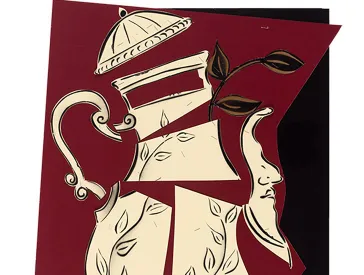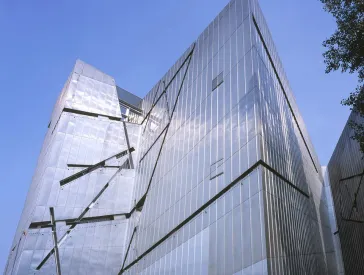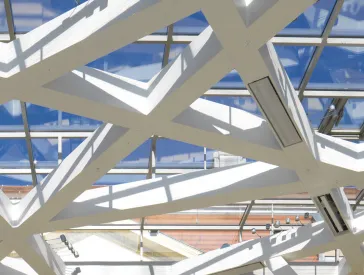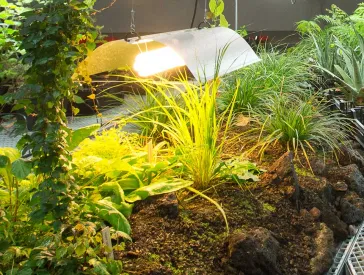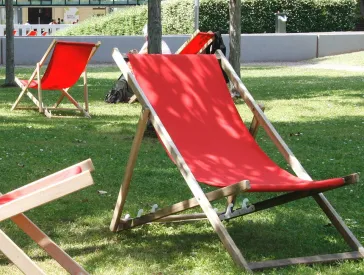
Garten der Diaspora; JMB, Foto: Ernst Fesseler
Der Garten der Diaspora
Ein neues Terrain für pädagogische Programme in der W. Michael Blumenthal Akademie
Der Garten der Diaspora liegt im Inneren der W. Michael Blumenthal Akademie und dient als Raum des Austausches und der Reflexion, aber auch als Lern- und Anschauungsort für unsere pädagogischen Programme. Von den Gartenkünstler*innen des Landschaftsarchitekturbüros „atelier le balto“ gestaltet, setzt sich der Garten der Diaspora mit Aspekten des Lebens in der Diaspora, der Zerstreuung, auseinander.
Für einen Besuch des Gartens der Diaspora finden Sie die Öffnungszeiten der W. Michael Blumenthal Akademie auf unserer Seite Rund um den Besuch.
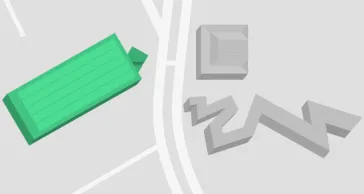
Wo
W. M. Blumenthal Akademie, Garten der Diaspora
Fromet-und-Moses-Mendelssohn-Platz 1, 10969 Berlin
(gegenüber dem Museum)
Thematisch gestaltete Plateaus
In der Mitte des Gartenraumes stehen vier scheinbar schwebende Stahlplateaus von ca. vier mal 14 Metern Fläche, die von einem Holzpodest umgeben sind. Die Plateaus können flexibel gestaltet und genutzt werden. Ihre Bepflanzung orientiert sich jeweils an einem spezifischen Thema: Landschaft, Kultur und Boden, Natur und Mensch. Das vierte Plateau mit der Bezeichnung „Akademie“ dient als Experimentierfeld für die Teilnehmenden an den pädagogischen Programmen: Hier stehen nicht nur Karten, Zeichnungen und Fotos zur Verfügung, sondern auch Erde, Samen und Töpfe zum selbst Bepflanzen. Die Plateaus zeigen unterschiedliche Grade an Veränderlichkeit und präsentieren den Garten dadurch mit immer wieder neuen Aspekten und Schwerpunkten.
Vielfältige Pflanzen
Auf den vier Plateaus findet sich eine große Vielfalt an Pflanzen: Solche, die einen besonderen Bezug zum jüdischen Leben oder zu jüdischen Persönlichkeiten haben; Pflanzen in verschiedenen Entwicklungsstadien, die Prozesse wie das Samen, Wurzeln, Wachsen oder Welken zeigen; Pflanzen, die selbst einen Prozess der „Diaspora“ im Sinne einer Zerstreuung vollzogen haben oder noch vollziehen; und schließlich solche, die die Teilnehmer*innen unserer Bildungsprogramme ausgewählt haben.
Unsere Gebäude: Barock und Daniel Libeskind (6)
